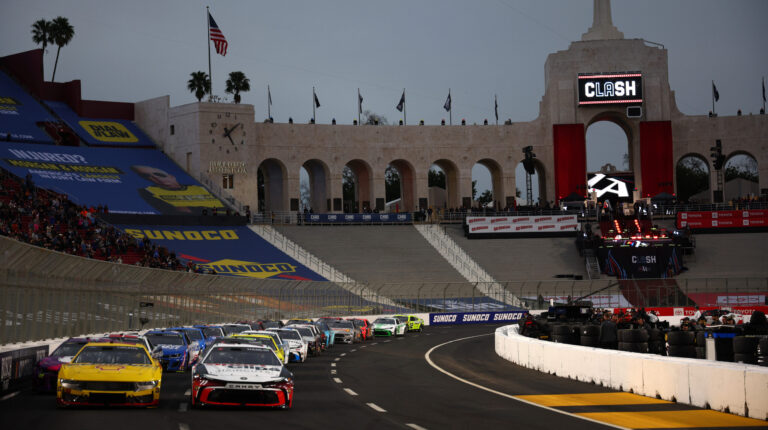The Garage 56 effort at Le Mans in 2023 made many in Europe sit up and take notice of NASCAR. Not only did the project exceed all expectations but it was also a message of intent regarding the series’ international aspirations.
Stock car racing isn’t going after F1, and Cup is not about to become a globe-trotting series, but according to Chad Seigler, chief international officer, VP at NASCAR, a Cup race outside the US is now a matter of when, not if.
Seigler oversees a department that has grown exponentially in the last decade, going from a one-person effort to having 14 staff working from offices in Daytona, Charlotte, Mexico and Canada. That team will soon grow further with the addition of dedicated European market staff. As Seigler admits, “For some people in the US, when we talk about NASCAR and international, those two things don’t really go together, a lot of people don’t connect those two.”
Garage 56 went a long way toward changing that perception, and the sport is still seeing a lift from its La Sarthe excursion, but this was just the most visible ‘international’ element of NASCAR’s plans. Its European, Mexican and Canadian series draw decent crowds and the latest expansion has been into Brazil.
Seigler highlights that the thinking behind these series is not about muscling in on domestic racing products but more about nurturing the foundations for a more internationally flavored US competition. In effect, providing an incubator for budding stock car talent and a potential route to Trucks, Xfinity or Cup.
“Our model’s a little different from some of the other, what I would call global platforms, in the sense that we don’t necessarily take our Cup series and pack it up and move it around the world,” he outlines. “That’s not our business model. What we try to do is create individual series in those markets that we’re targeting. Our goal is to build an infrastructure in those markets. You want to create local stories, local team owners, local mechanics, and really expose the sport of NASCAR to markets outside of the US. The goal is to develop all those while at the same time, if you have a young driver that says, ‘Instead of going to F1, my goal is to go to Daytona,’ we’re providing them a platform.”
This approach has started to pay dividends. Take Daniel Suárez, who currently drives for Trackhouse Racing in the No. 99 Chevy Camaro Cup car. He cut his teeth in the NASCAR Mexico series, before moving into the K&N Pro Series East in the US and then onto Xfinity, where he became the first Mexican to win a NASCAR National Series championship in 2016.
Of course, there is a desire to expand the reach of stock car racing. Exposing fans in foreign markets to NASCAR’s way of racing, bringing the Americana vibe to crowds more used to single-seaters and sportscars, gives them a chance to “sample our way of going racing”, says Seigler. “At some point, you’re going to get some saturation of how many fans can you get in the US. So you start to say, okay, where are those new fans, where are there new opportunities? We feel confident that people who see our style of racing will enjoy it.”
This dovetails neatly with other elements of the NASCAR empire. Take IMSA, for example, which brought top-level sportscar racing into the fold when it merged with the ALMS (American Le Mans Series) back in 2014. “I tell people, even though NASCAR is a big company, our department specifically is more similar to IMSA. That’s been our leading effort into international racing, Garage 56, that was IMSA led. They race sportscars, they have 17 different manufacturers. They have kind of always been the first through the door internationally,” highlights Seigler. “There is definitely a lot more collaboration within our building now with IMSA.”
All of this said, there is still the jewel in the NASCAR crown – Cup – and as Seigler confirms, an international round is now more than a possibility. “We know that’s the biggest show we have. We’ve been in pretty deep dialogue [with venues] and in Daytona alone we have 65 guests of our department, representing seven different countries, and we are in deep discussion with five of those about holding a Cup race.”
Where the first foray will land is still to be confirmed, though Seigler points out that the series has proved it doesn’t necessarily need a traditional track venue, the 2024 Clash taking place in the Los Angeles Coliseum stadium.
Of course, the teams and other series partners must be on board with what will undoubtedly be an extra strain in an already hectic schedule. “It’s an industry decision, not something we will make in a vacuum,” asserts Seigler, “but it is one we are excited about.”



